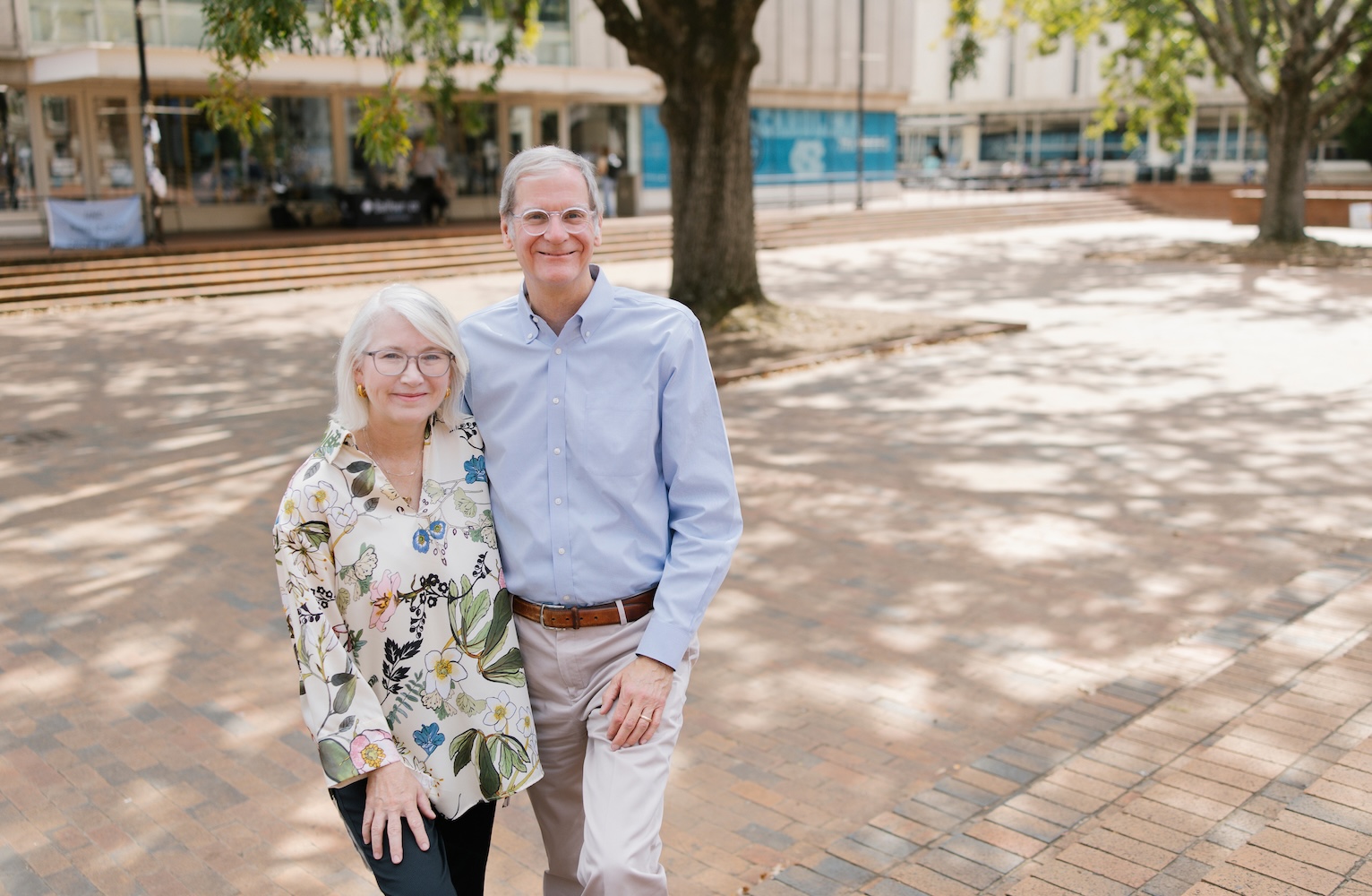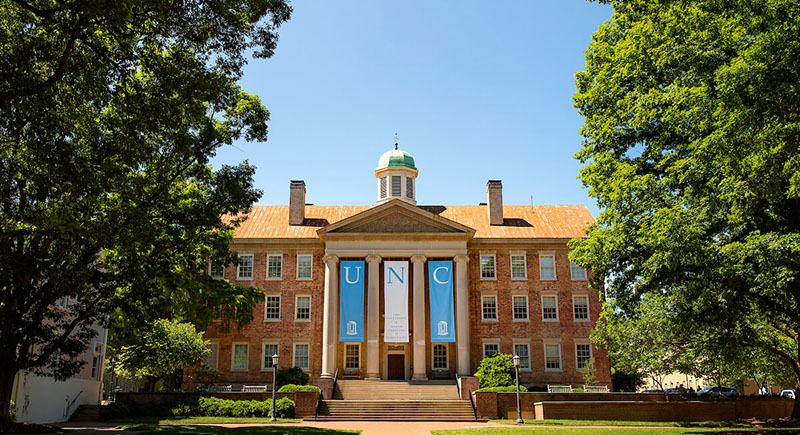
Frank and Ellen Proctor on the steps of the Pit. Planning is underway for the plaza’s first major redesign. (Photo by Jeyhoun Allebaugh)
Campus legend holds that if you sit on the steps of the Pit for a day, you will see every Carolina student at least once. If you sat there when Frank Proctor ’85 was a student, you might have seen him walking by a half dozen times throughout the day.
“I was a staff writer for The Daily Tar Heel when their offices were in the Student Union,” Proctor said. “I was a history major and president of Model UN, which put me in Hamilton Hall, and my favorite place to study was the Undergraduate Library. So a huge part of my student life was that triangle with the Pit at the epicenter.”
Forty years later, a generous gift from Proctor and his wife, Ellen, is helping launch the first major redesign of the bustling campus square since it was created in 1969. The project aims to retain the Pit’s vibrant feel while resolving drainage issues, improving accessibility and increasing shade.
“UNC is such an iconic, beautiful university, but there is some infrastructure that needs investment,” Ellen Proctor said. “We wanted to support that vision of investing in the future, and especially in the Pit as a place that is so important to campus life and culture.”
University Landscape Architect Daniel Widis said that the original terracotta drainpipes have been crushed by roots from the large oak trees in the middle of the Pit, causing the giant “Pit puddles” to form following significant rain.
“To replace the pipes you have to tear up the brick, and that would kill the trees — which are already not in good health,” Widis said. “If you take out those trees, a lot of what makes this design successful falls apart. Once you pull that string, you start to think, ‘what would really be best for the space? Does it still need to be a pit? What would work best for the people who use it?’”
Widis, who graduated from Carolina in 2009, said that it will be important to retain the town square atmosphere. With undergraduate enrollment exceeding 20,000 in 2025, Widis noted that the area must accommodate far more students than when it was first constructed.
“You see huge bottlenecks of people during the day because people don’t want to or can’t walk through the center,” Widis said. “So our job is to think about what dials we can turn to fix those things without losing the essence of the place that people are attached to.”
Student, faculty and staff surveys and feedback sessions on conceptual design renderings are informing the design work currently underway. These renderings show a tree-lined brick and paved plaza with a mix of fixed and movable furnishing to provide seating and retain the open sightlines between the student union, student stores and Lenoir Dining Hall.
Widis expects a schematic design to be complete by the end of October, which would then need approval from University leaders. While a final budget for the project is still being determined, the University will continue to fundraise to cover at least a portion of the Pit renovation.
In the spring of 1969, when The Daily Tar Heel described the area that would become the Pit as a “big, ugly mud hole,” it seemed unlikely that the depression outside the newly constructed campus bookstore and student union would add much to life at Carolina.
But when students returned to campus that fall, the sunken area had been bricked over and two trees planted. With a more energetic vibe than Carolina’s stately quads, the new plaza became a popular gathering spot for daily activities.
For decades, the Pit has been a hive of activity in the heart of campus, with student organizations tabling to reach new members or raise money for an important cause, performances by á cappella or dance groups and countless students pausing for coffee or lunch before their next class.
The Proctors say they made their gift to honor and support that lively, town square feeling that defines the Pit. Frank Proctor, who later became general manager of Newsweek magazine in Hong Kong, remembers meeting in the Pit with his Daily Tar Heel editor to hash out story ideas. He even tried his first bagel there, purchased from a cart parked near the Pit steps.
“One thing I love is that it is this incredibly vibrant space with so much energy, but I was always able to find a place for a quiet conversation,” he said. “So it’s got this beautiful mixture.”
“It’s the UNC students who really make the Pit,” he continued. “The structure and landscape are important. But what really matters is what happens there. If it’s open and inviting, then Carolina students will shape the space that the University needs for the future.”
Carolina has established The Pit Renovation Fund to support improvements to the Pit.
Story by University Development Communications.

